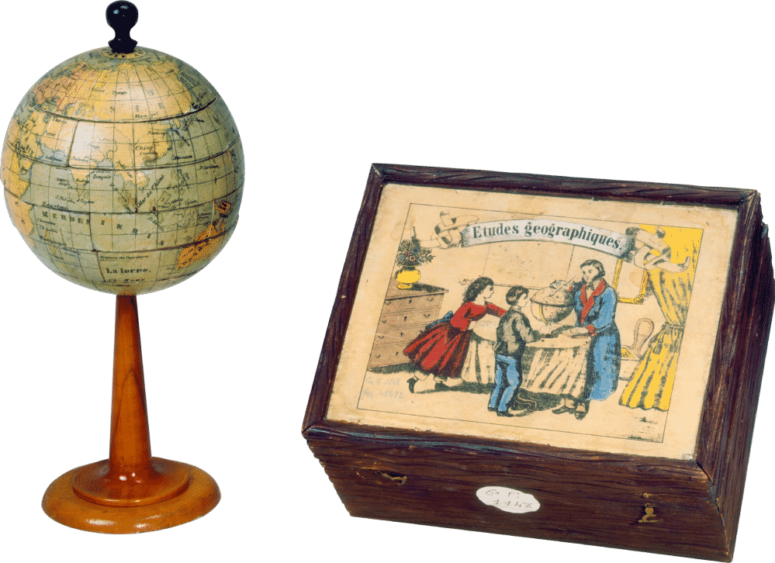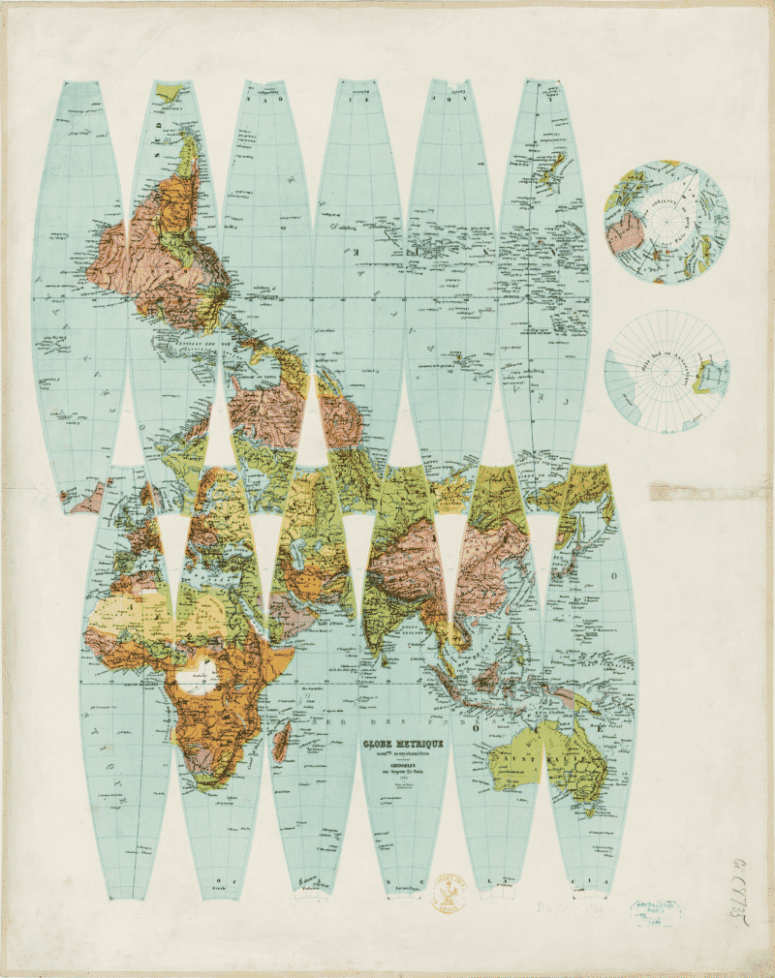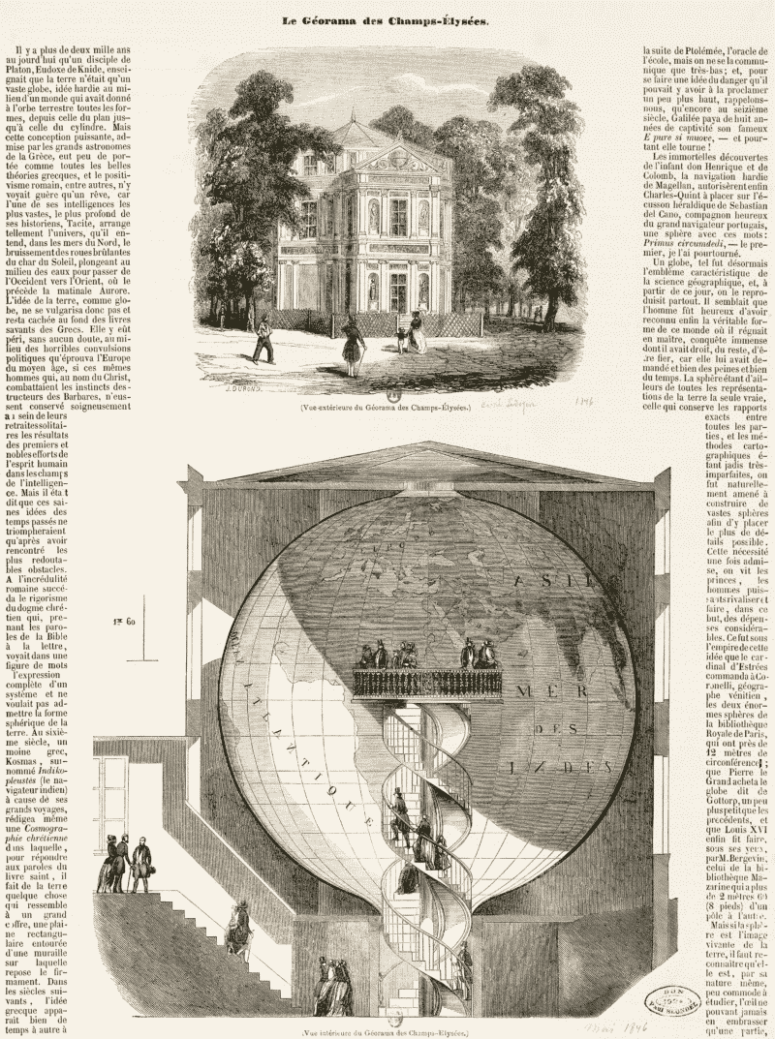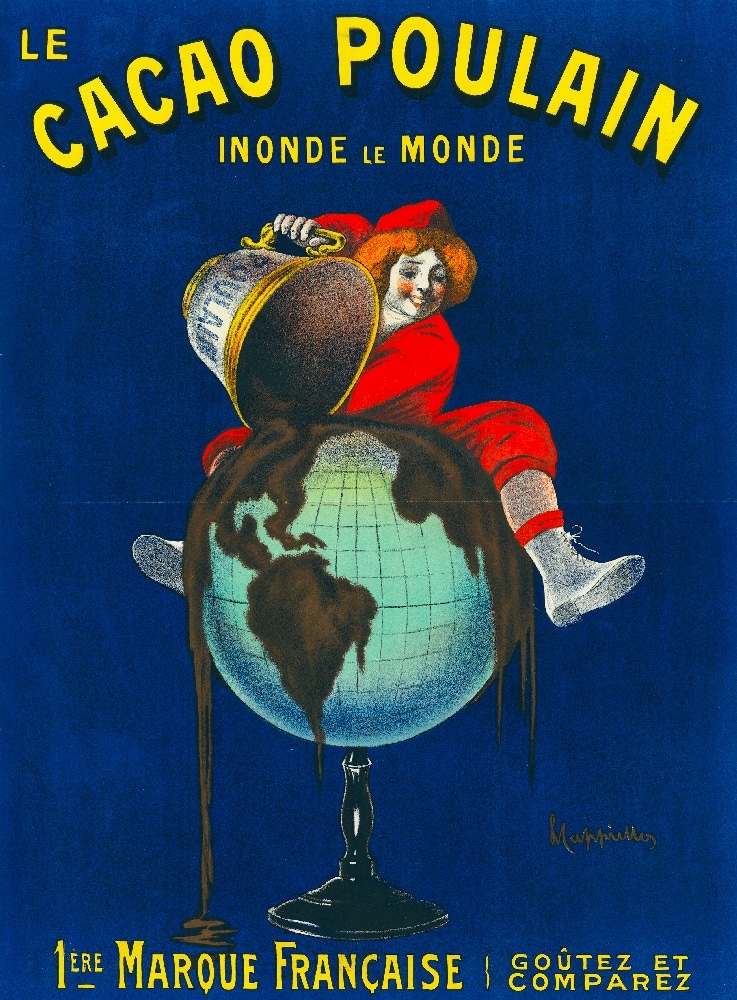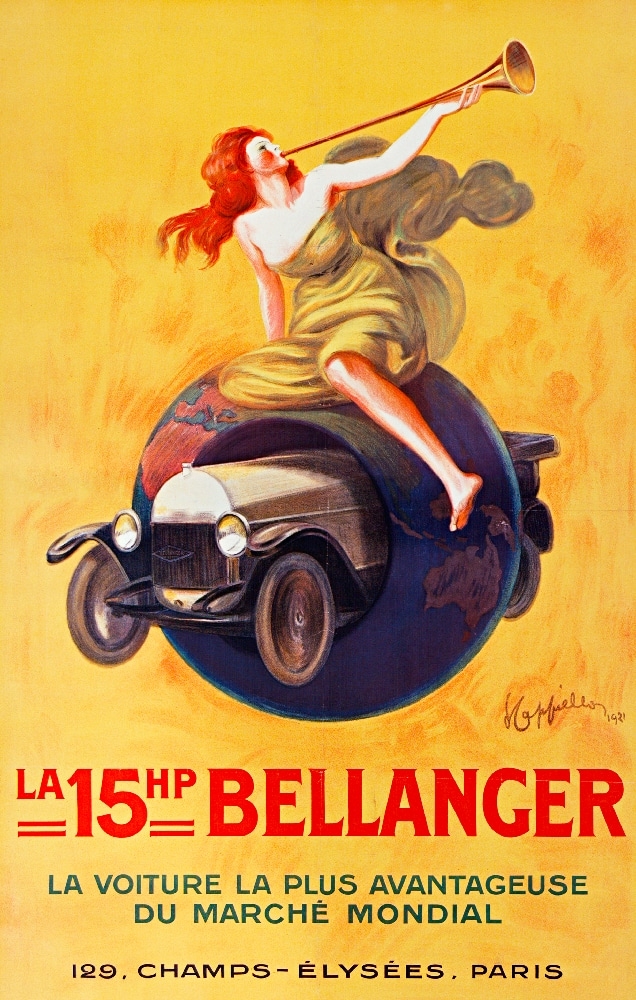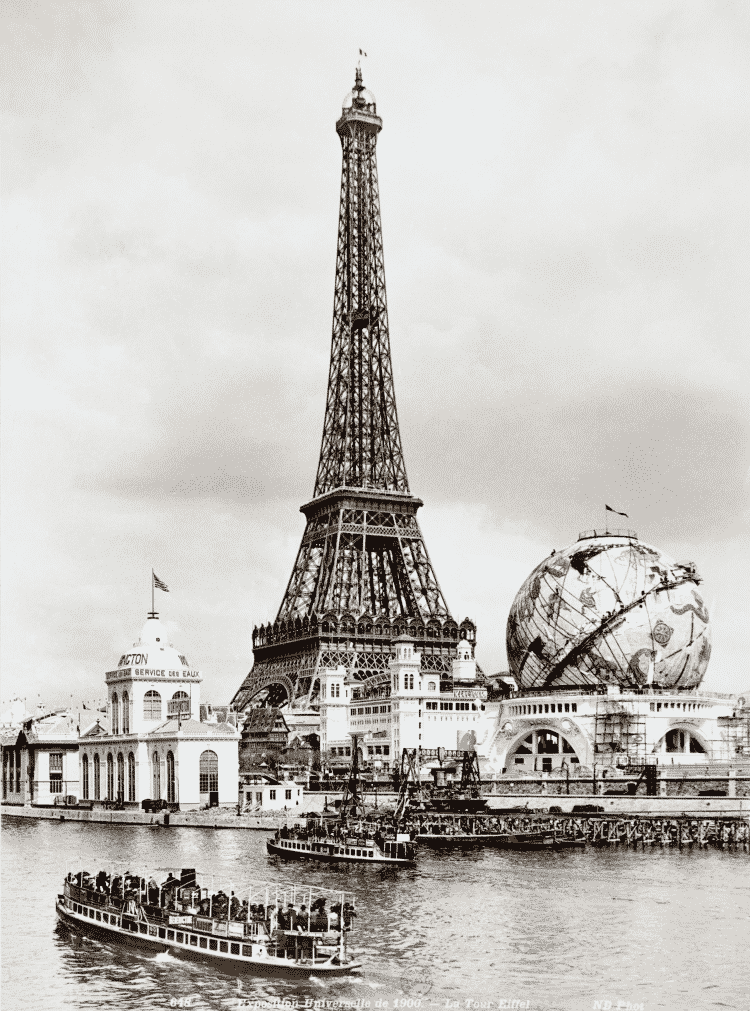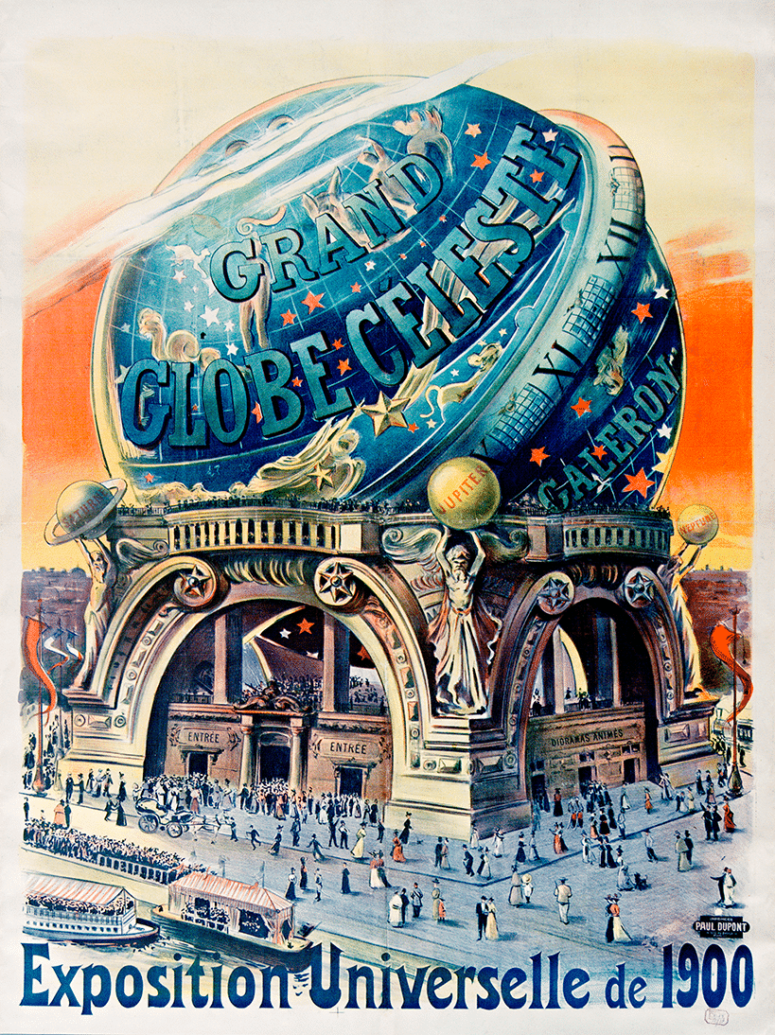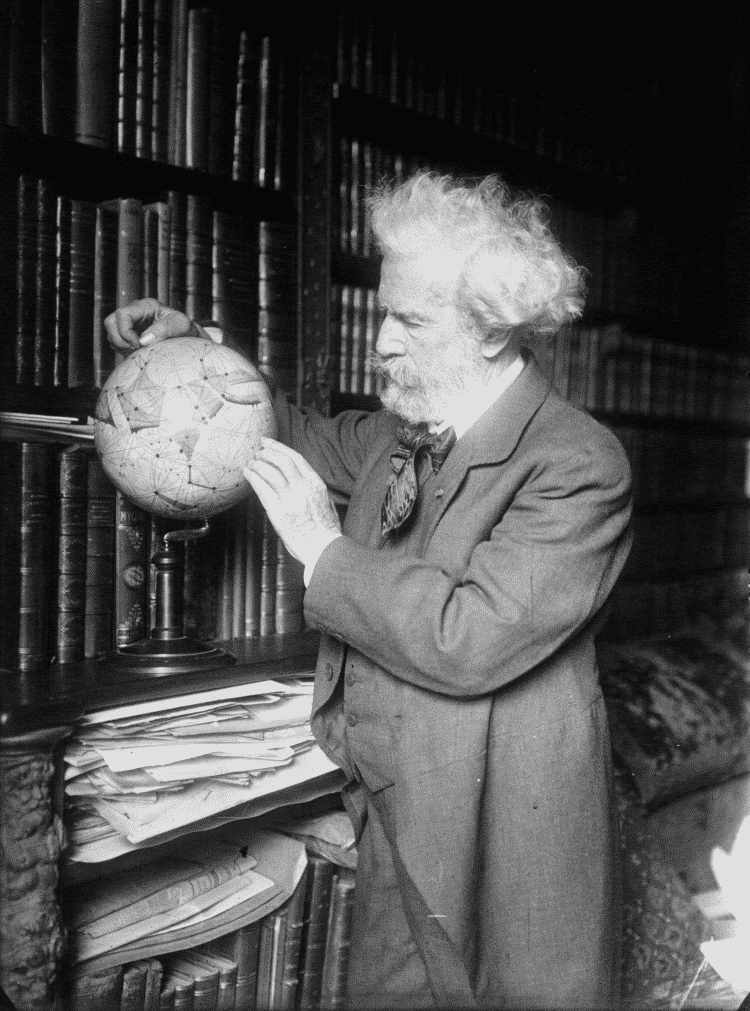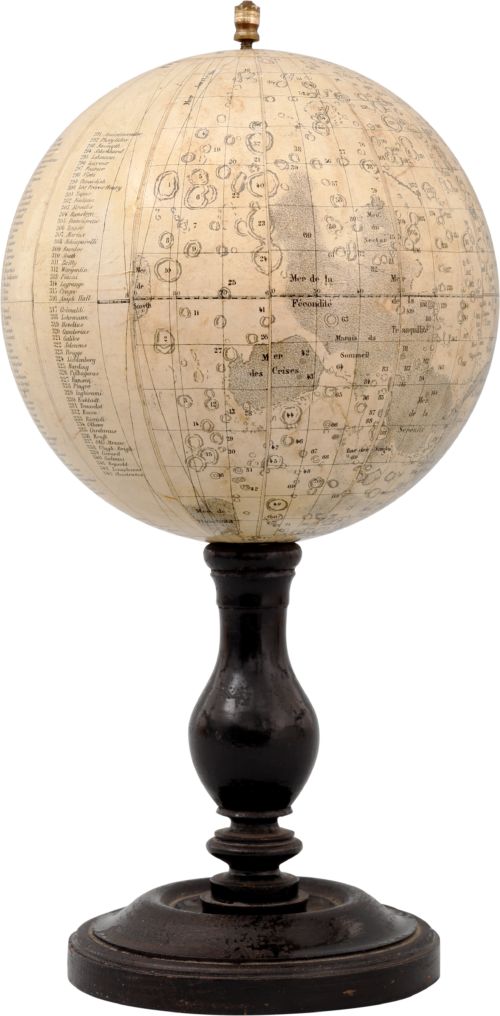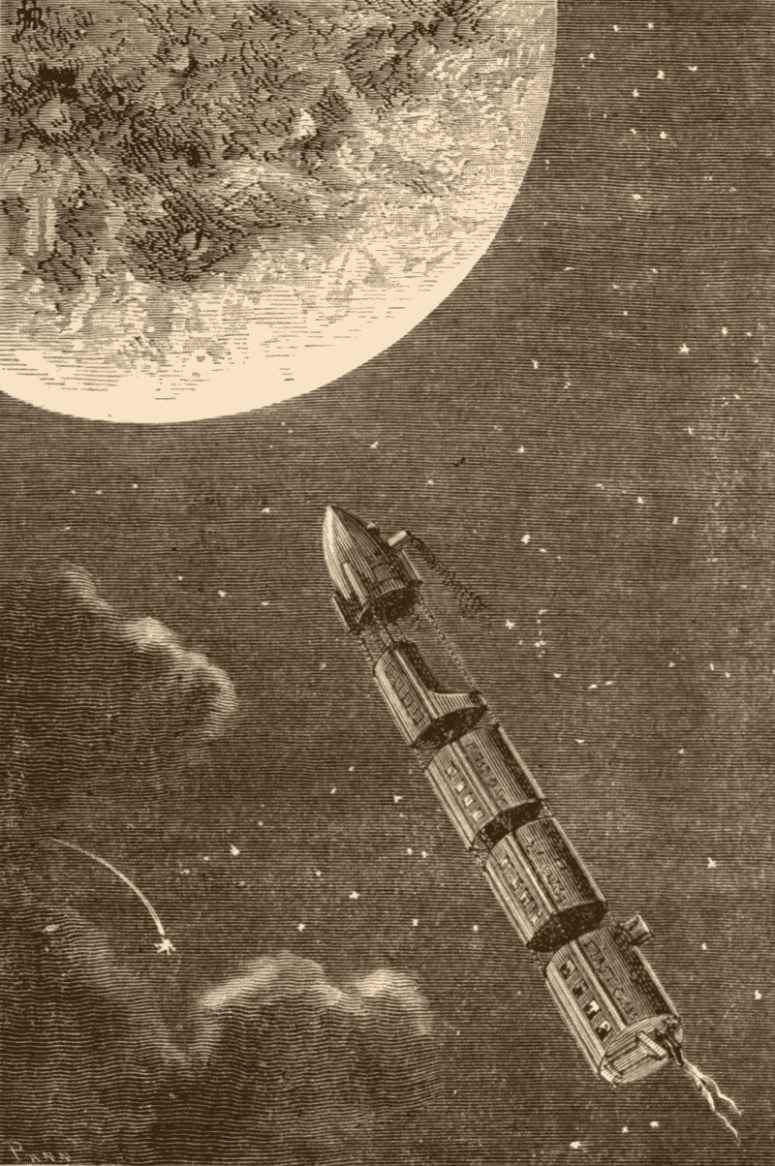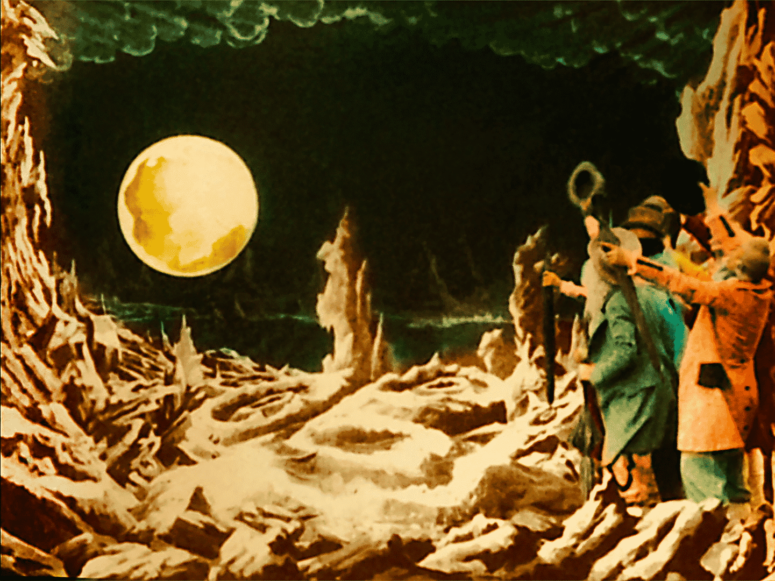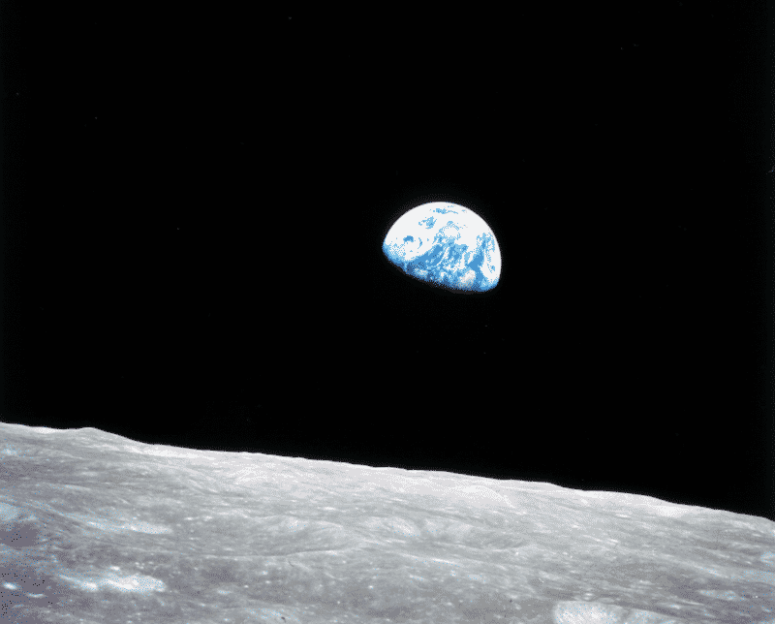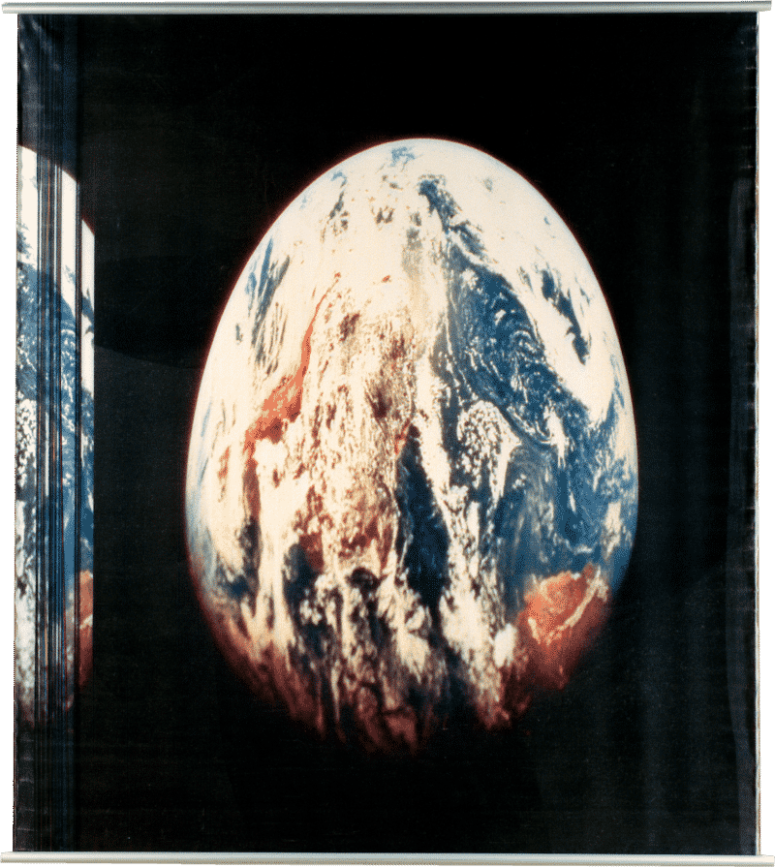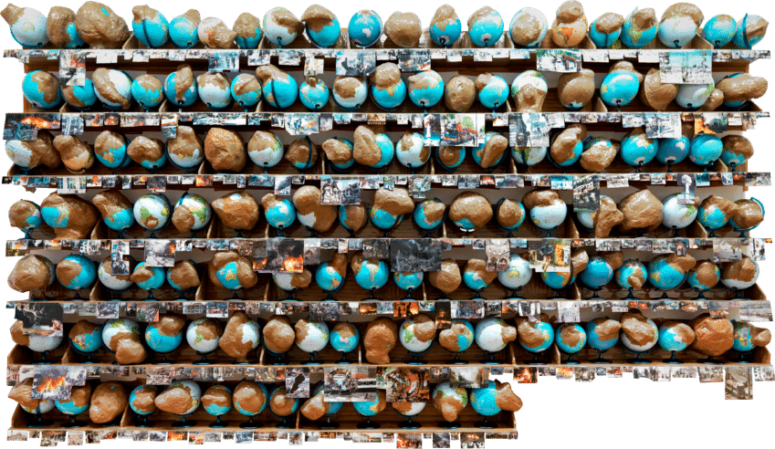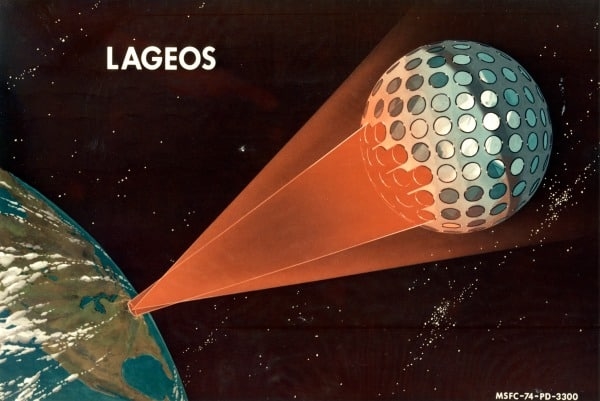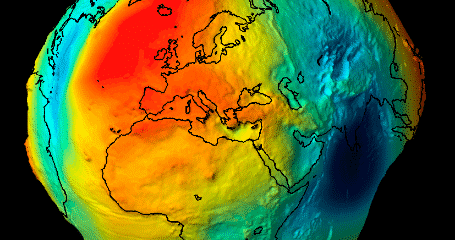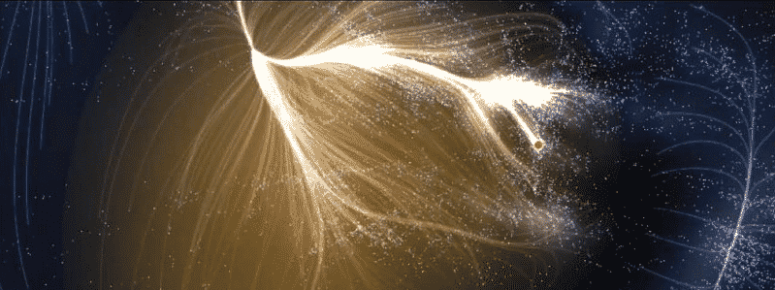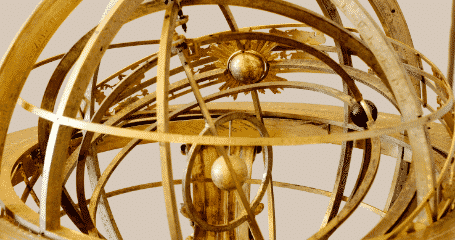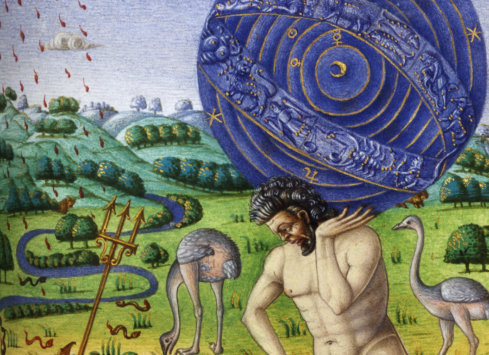
Spheres in Transformation
In the 19th century, globes began to be transformed. Thanks to evolving techniques, they achieved a wide range of dimensions, from the most diminutive to the most extravagant. Since the early 20th century, artists have been distorting and reinterpreting the spherical shape that had become so familiar, precisely when it was becoming common knowledge that the Earth was not perfectly round and that it was just one celestial body among billions of others.
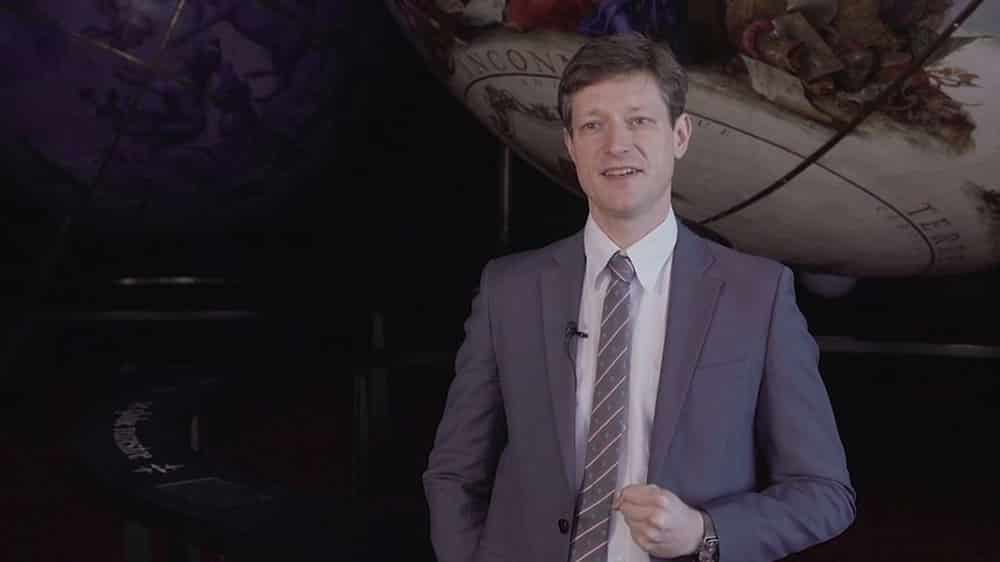
A familiar, educational, and universal object
In the 19th century, globes began to be transformed, acquiring new presentations and more varied meanings. They came in all sizes, from tiny pocket globes to colossal georamas that were viewed from the inside. Materials, techniques, and formats changed: the polychrome lithographic printing process allowed for mass production of less expensive globes, meaning that ownership could become more widespread. Globes became more common, and acquired pride of place in schools. Their cartographic contents also evolved: terrestrial globes became thematic, offering an opportunity to intertwine data about political, economic, geological, and anthropological phenomena. Relief globes, inflatable globes, globe puzzles, and soon, illuminated globes, were among the appealing new formats.
The image of a round Earth had become familiar to all. More than ever, the globe had become a symbol of universality. In advertising, it incarnated the global ambitions of consumer goods ranging from food to clothes and cosmetics, and above all, in the 1910s and ‘20s, industrial goods like the automobile. This is exemplified by Leonetto Cappiello’s well-known poster, which featured the 15-hp Bellanger crossing the globe to the sound of Fame blowing on her trumpet.
The globe was the perfect emblem for World’s Fairs: a gigantic, ephemeral celestial cosmorama was constructed at the foot of the Eiffel Tower for the 1900 World’s Fair in Paris.
Popular astronomy
At around that time, with the development of popular astronomy and futuristic fiction, mankind began to fantasize about conquering space and being able to observe an Earthrise from the surface of the Moon someday. The celestial globe, no longer capable of portraying the current state of knowledge, was in decline. By the same token, figurative constellations inherited from Antiquity and the Middle Ages faded away, except for purely decorative or educational uses. Replacing armillary spheres, the planetary model of our solar system integrated new celestial bodies like Uranus (1781), the asteroid belt (circa 1850) and Neptune (1846), as well as Pluto (1930).
Aside from the Moon, which inspired dreams of walking on its surface (Jules Verne, From the Earth to the Moon, 1865; then the sequel, Around the Moon, 1869), Mars, the nearby planet believed to be the most similar to the Earth in appearance and size, most sparked people’s imagination. Observers became convinced they could perceive a vast network of gigantic canals built by extra-terrestrials. Astronomers like Camille Flammarion formulated bold hypotheses about them which would delight and inspire “science fiction” authors.
Artists’ visions
For decades, the Earth as seen from space, and particularly from the Moon, was a fantasy shared by both scientists and artists (Jules Verne, Georges Méliès) alike, until the now familiar, but at the time breathtaking, photograph of Earthrise taken by William Anders from the Apollo 8 spacecraft in lunar orbit (1968).
The photograph of the “blue planet” taken from space has become both banal and eminently symbolic of the world’s beauty and fragility. That novel perception of the Earth has inspired artists like Yves Klein, Alain Jacquet, Thomas Hirschhorn, Mona Hatoum, and Batoul S’Himi to revamp formats and create activist reinterpretations that engage with geopolitical and ecological issues that are crucial for mankind’s survival.
In the infinite universe
In this, the 21st century, the true shape of the Earth is now known to us with high precision thanks to satellite geodesy: measurements of the Earth by means of artificial geostationary satellites. That shape has been transposed into a model called the geoid, with all its imperfections exaggerated.

In the infinite universe, the stars can no longer be counted, space-time evolves between the principles of attraction and expansion, and the shape of the cosmos has become impossible to portray, short of daring to create dizzying interpretative cartographies. In 2014, for instance, Nature magazine featured a spectacular portrayal of Laniakea, the supercluster of galaxies that is home to the Milky Way and, therefore, to our solar system, on its cover. At that scale, the Earth is no more than stardust, a microscopic, ephemeral object at the furthest reaches of universe… a far cry from the location at the center of the world that our ancestors pictured.

